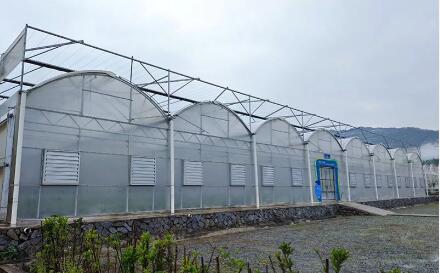An Introduction to Multispan Plastic Film Greenhouses: Advantages and Applications
2024-08-16
Multispan plastic film greenhouses have revolutionized modern agriculture by providing a controlled environment for plant growth. These structures are designed to optimize space, enhance crop yield, and protect plants from adverse weather conditions. In this blog, we'll explore the key advantages and common applications of multispan plastic film greenhouses.
What is a Multispan Plastic Film Greenhouse?
A multispan plastic film greenhouse is a type of greenhouse structure that connects multiple bays or spans under a single continuous roof. The roof is typically covered with a durable plastic film, which acts as a protective barrier against external elements while allowing sunlight to penetrate.
Advantages of Multispan Plastic Film Greenhouses:
1. Increased Growing Space:
The multispan design allows for the connection of multiple bays, significantly increasing the available growing space. This is particularly beneficial for commercial growers looking to maximize production in a limited area.
2. Cost-Effective Construction:
Compared to traditional glass greenhouses, plastic film greenhouses are more cost-effective to construct. The materials are lighter and easier to install, reducing both initial investment and maintenance costs.
3. Enhanced Climate Control:
The plastic film used in these greenhouses helps regulate temperature and humidity levels, creating an optimal growing environment. This controlled climate promotes faster plant growth and higher yields.
4. Energy Efficiency:
The plastic film provides excellent insulation, reducing the need for additional heating or cooling. This energy efficiency translates to lower operational costs and a smaller environmental footprint.
5. Protection from Pests and Diseases:
By creating a barrier between the plants and the external environment, multispan plastic film greenhouses offer protection against pests, diseases, and harsh weather conditions. This reduces the reliance on chemical pesticides and enhances crop quality.
Applications of Multispan Plastic Film Greenhouses:
1. Commercial Horticulture:
These greenhouses are widely used in commercial horticulture for the cultivation of vegetables, fruits, and flowers. The controlled environment allows for year-round production, regardless of external weather conditions.
2. Research and Development:
Multispan plastic film greenhouses are also utilized in agricultural research and development. Scientists and researchers use these structures to study plant growth, develop new crop varieties, and experiment with different cultivation techniques.
3. Urban Agriculture:
In urban areas where space is limited, multispan greenhouses provide a viable solution for growing food. These structures can be installed on rooftops or vacant lots, contributing to local food production and sustainability efforts.
4. Nurseries and Seedling Production:
Nurseries often use multispan plastic film greenhouses for seedling production. The controlled environment ensures the healthy development of young plants, which can then be transplanted to open fields or sold to customers.
Conclusion:
Multispan plastic film greenhouses offer a range of benefits, from increased growing space to enhanced climate control. Their versatility makes them ideal for various applications, from commercial farming to urban agriculture. By investing in a multispan greenhouse, growers can improve their productivity, reduce costs, and contribute to sustainable farming practices.



